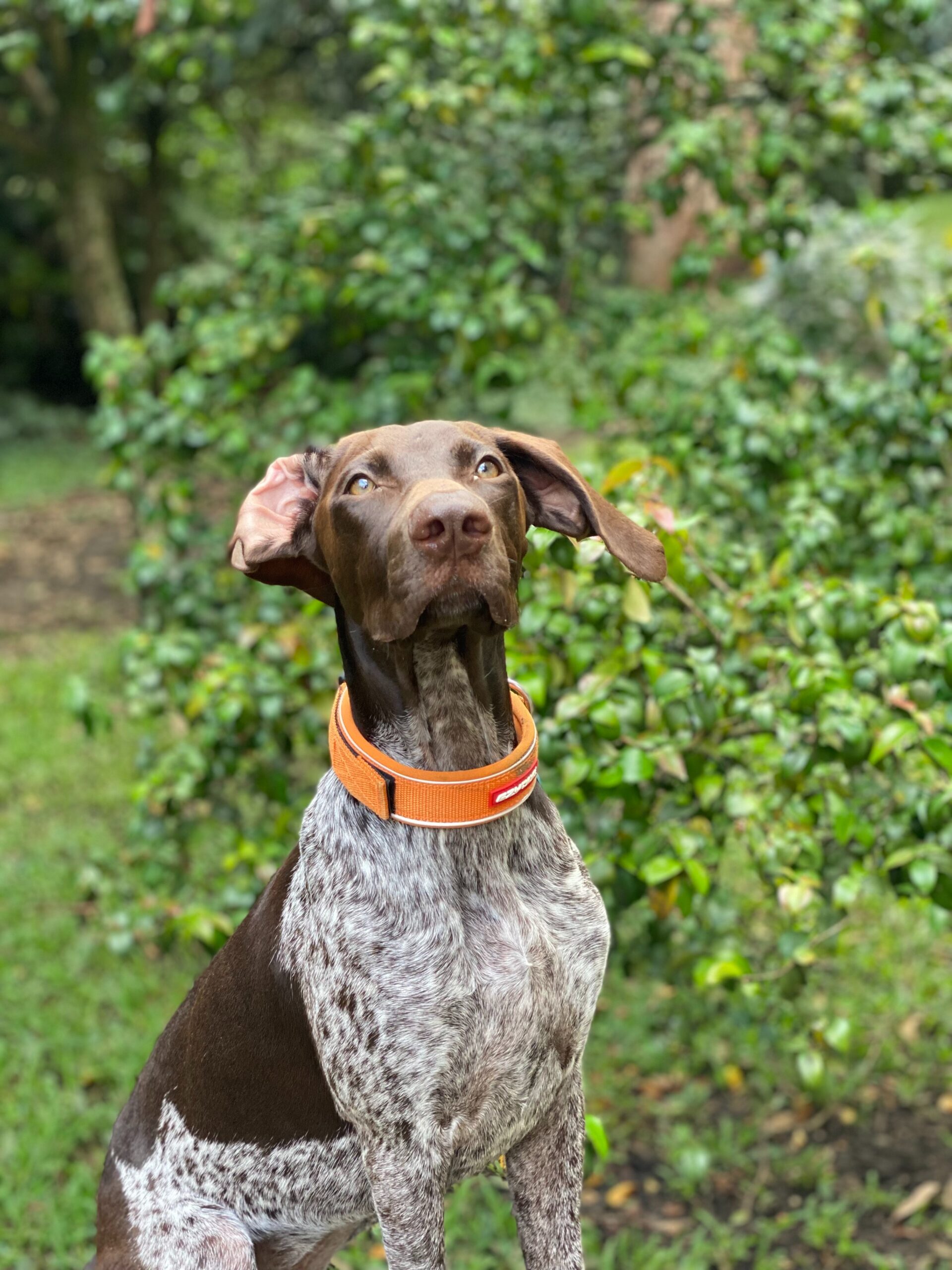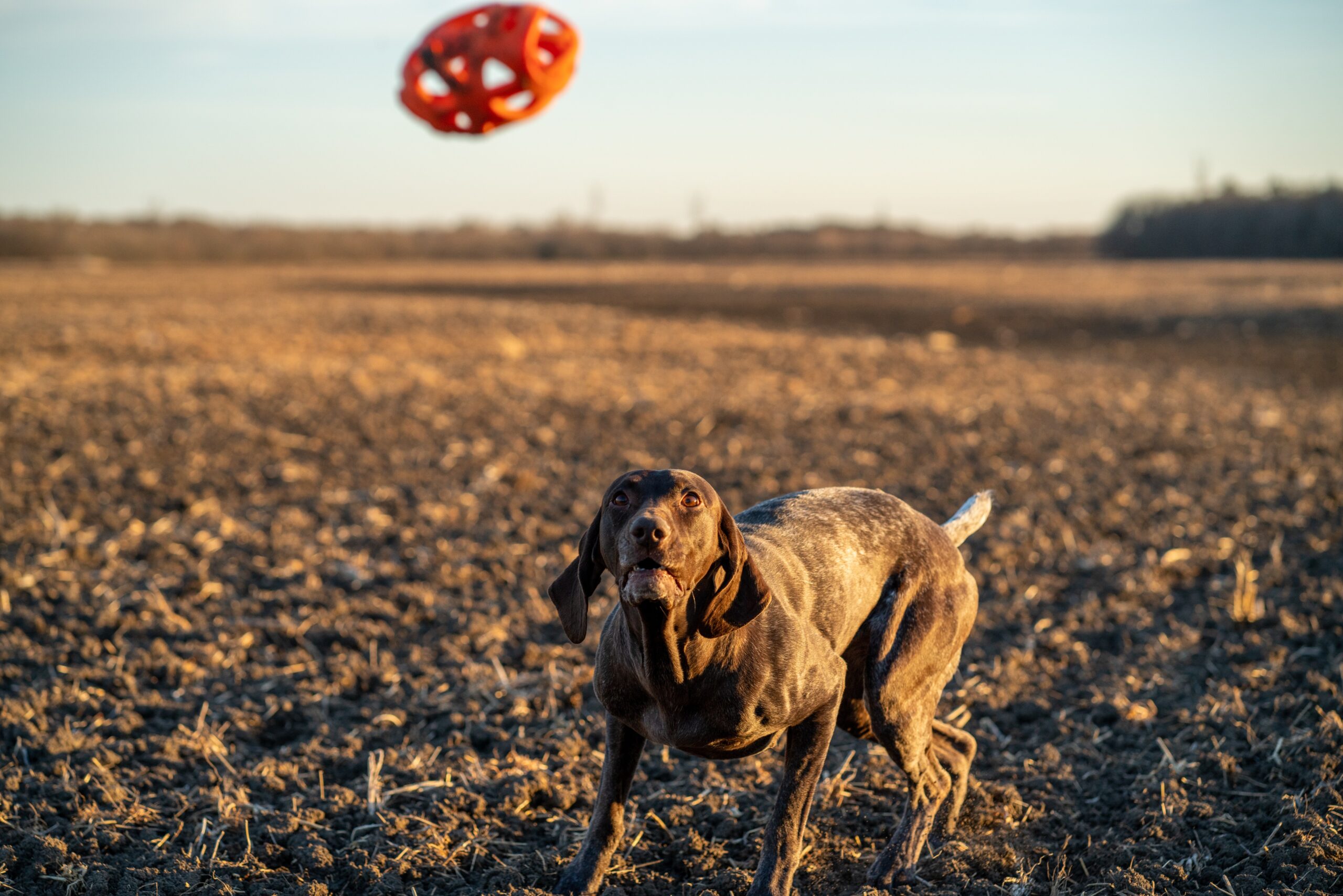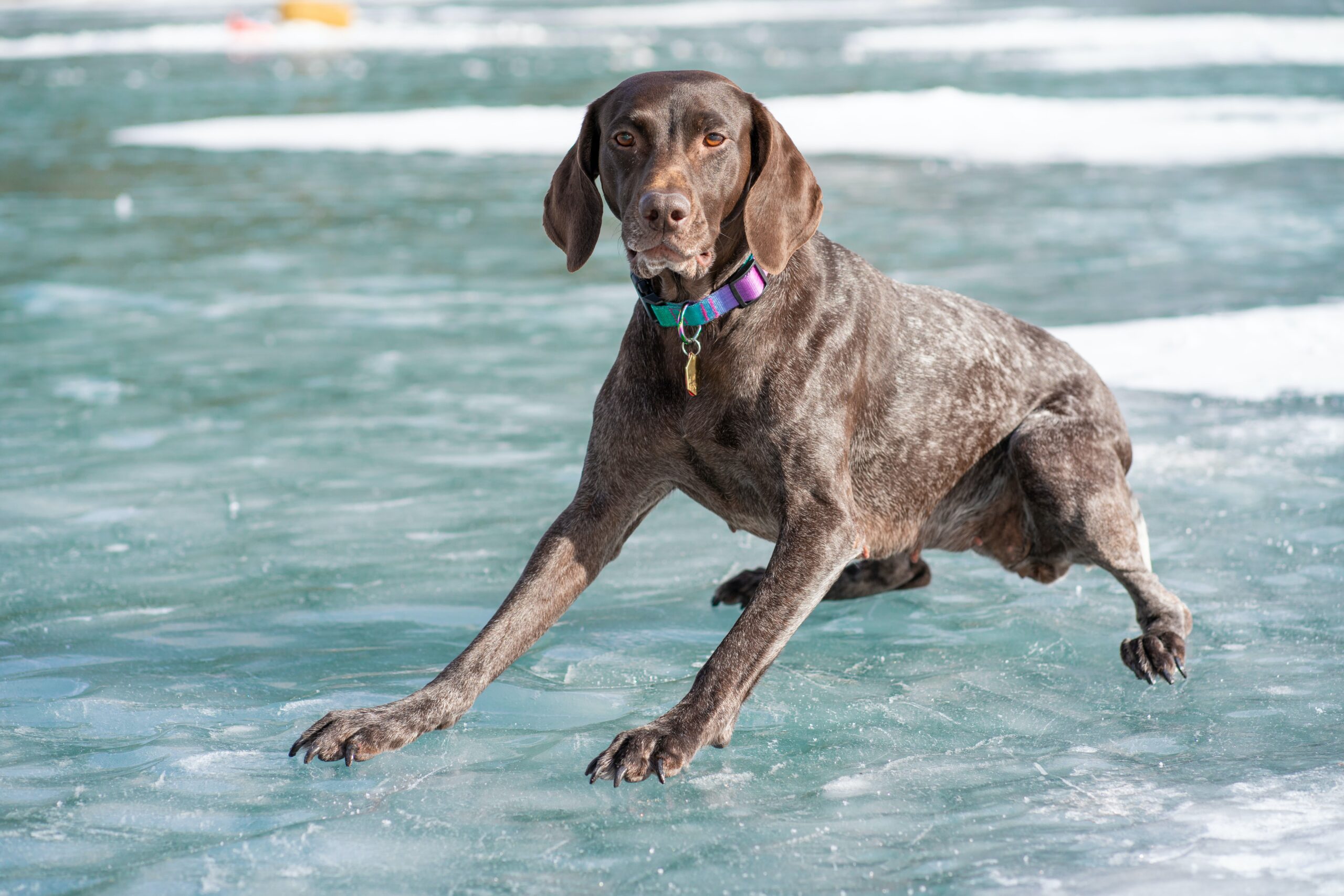The adaptable, medium-sized German Shorthaired Pointer is a passionate all-around gundog who thrives on intense activity, rewarding training, and lots of affection. Male German Shorthaired Pointers reach between 23 and 25 inches tall at the shoulder and weigh between 55 and 70 pounds; females tend to be smaller. GSP owners refer to their aristocratic companions as the “perfect pointer.” The coat is the either solid liver (a reddish brown) or has distinct patterns of liver and white. The slender dark eyes sparkle with vigor and warmth. GSPs are renowned for their strength, speed, agility, and endurance as they were created to work long days in the field or at the lake. ‘Noble’ and ‘aristocratic’ are frequently used adjectives to describe the overall appearance. GSPs create contented, tame pets that securely bind to their family.
German Shorthaired Pointer
Average sizes and life
expectancy of the breed.
Height
23-25 inches (male)
21-23 inches (female)
Weight
55-70 pounds (male)
45-60 pounds (female)
Life Expectancy
10-12 years
Breed Traits & Characteristics
About the Breed

Owning a dog is not just a privilege; it’s a responsibility. They depend on us for, at minimum, food and shelter, and deserve much more. When you take a dog into your life, you need to understand the commitment that dog ownership entails.
 Health
Health
Recommended Health Tests From the National Breed Club:
- Hip Evaluation
- Cone Degeneration DNA Test
- Elbow Evaluation
- Cardiac Exam
- Ophthalmologist Evaluation
 Grooming
Grooming
 Exercise
Exercise
 Training
Training
 Nutrition
Nutrition
History
German hunters spent centuries combining several breeds to create this adaptable bird dog, which was eventually mastered in the 1800s. Since they were so successful, GSPs continue to be one of the top winning breeds in hunting competitions.
The history of the German bird dog goes back at least to the 1700s when master breeders began experimenting with tracking hound-pointing dog hybrids in an effort to create a swift but muscular hunter with a keen nose and adaptability. It is not surprising to learn that Prince Albrecht zu Solms-Braunfels, who was himself a nobleman, played a significant role in the early development of this type of noble bearing.
The prince and his fellow enthusiasts created a hunting dog that could do it all, and they were incredibly successful. The following is a list of the GSP’s qualifications from a breed historian: “a staunchly pointing bird dog; a keen-nosed night trailer; a proven duck dog; a natural retriever on land or water, with pleasing conformation and markings, and great powers of endurance; and an intelligent family watchdog and companion.”
On a range of prey, including gamebirds, possums, rabbits, raccoons, and even deer, the GSP has been successfully used in hunting. The GSP enhances his reputation as one of Dogdom’s best swimmers thanks to his webbed feet and sleek but durable structure.







